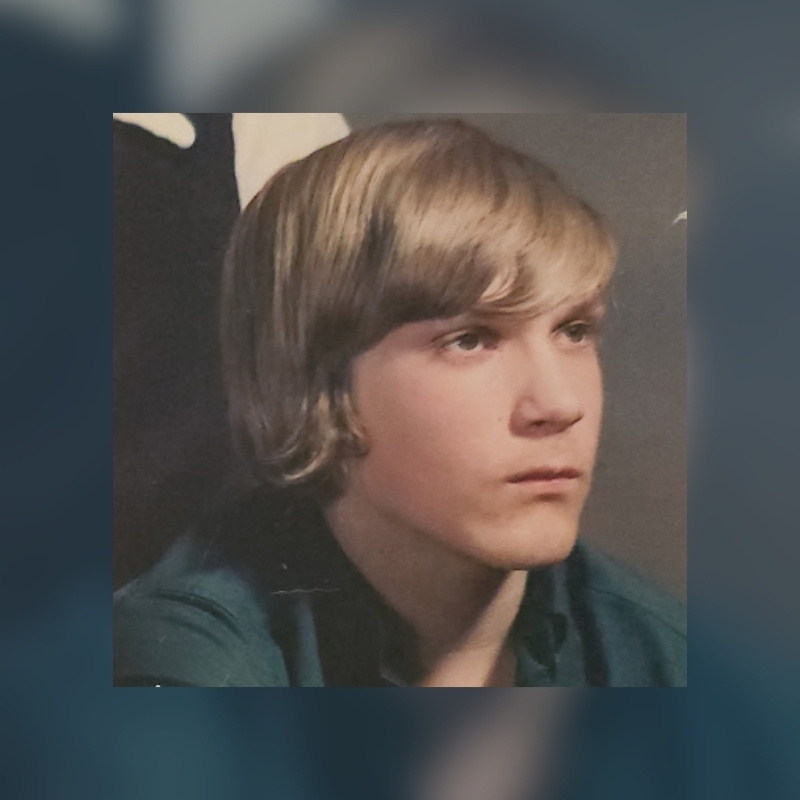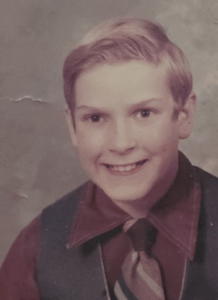On a winter night in 1981, a teenager stepped out of his Essex Junction home and never returned. His disappearance unsettled the quiet Vermont town, leaving his family searching for answers that never came.
Years later, a hunter in the woods made a discovery that would finally explain what happened to the missing teen, but not why. Whispers of a stolen check, shifting stories, and a courtroom battle followed, yet the truth is still tangled even to this day. This is the story of a teenager whose life ended far too soon, a family’s years-long fight for justice, and a case that still raises questions about trust, betrayal, and the limits of the system meant to deliver answers.
Disappearance
The phone rang just after 6:30 on January 26, 1981 inside a Lincoln Street home in Essex Junction, Vermont, and Carolyn Desmarais picked up the receiver. On the line was a friend asking for her son, 16-year-old Craig Jackman – “Cooley,” as his friends called him.
According to reporting by Ian Polumbaum for the Burlington Free Press, Craig was in the bathroom, so Carolyn relayed the message through the door. The invitation was simple: did he want to go bowling? Craig’s answer came back just as simply. No, he wasn’t interested in sitting around the bowling alley and watching his friend bowl.
Carolyn hung up, slipping on her coat as she headed out for a quick errand. Before she left, she placed a few dollars on the counter in case her son changed his mind. When she returned a short time later and Craig wasn’t home, she thought nothing of it. Maybe he had gone out after all.
But as the hours ticked by, the silence inside the house grew heavier. Ten o’clock came and went. Craig’s curfew passed, and the bed he usually filled sat empty. That night stretched into morning, and then into another day. Craig Jackman never came home.
When Carolyn went to police with concerns about her son’s failure to return home, she told them how he left with practically no money, maybe $2 at most. Jodie Peck reports that Craig didn’t bring his asthma medication or the meds he’d need for his bee sting allergy. He didn’t even pack a change of clothes.
Craig’s name and description circulated in town in hopes of tracking down anyone who may have seen him after January 26th. He left his house that night wearing a blue corduroy jacket, a tan sweatshirt, jeans and hiking boots. He was 5 feet 6 inches tall, 130 pounds.
Friends said they never saw him that night. Essex Police Lt. Robert Yandow talked to Brian, the friend who called Craig about bowling on the night he was last seen, but he didn’t have anything to share with police. Brian said he didn’t know where Craig might have gone.
Craig’s mother, Carolyn, and his sister, Suzanne, weren’t about to sit back and hope the police arrived with answers. They went to work themselves. Carolyn printed fliers with Craig’s photo and offered a $1,000 reward for information. At the bottom, she added a plea written in the voice of Craig’s godson, a toddler barely old enough to speak, asking his godfather to come home.
Stacks of fliers went out across Vermont, but many were mailed south to Florida. A psychic had told Carolyn that Craig could be out of state and was probably working in a warm climate, maybe even in an orange grove. The psychic felt that Craig may be with an older man who is a quote-unquote “bad influence.” A second psychic also mentioned a man being a bad influence on Craig, and specifically identified Florida, too.
Carolyn and the rest of Craig’s family held onto hope that the visions of psychics would prove to be true, but police hadn’t been able to come up with any legitimate leads as to Craig’s whereabouts after almost an entire year of searching. Carolyn made a comment that it was easier to find a missing car than it was to find a missing child, pointing to the fact that at the time, there was no national clearinghouse for missing persons.
The National Center for Missing and Exploited Children wasn’t founded until 1984, and NamUS is even more recent, in 2007. There were, however, services like “Child Find” out of New York and “Search” the National Runaway/Missing Persons Report magazine. Carolyn located and leveraged nearly every resource available to get her son’s name and face out there.
Craig’s birthday in December of 1981 came and went without any contact from him. Carolyn told Jodie Peck of the Burlington Free Press that she waited by the phone for her son to call. She planned to do it again on her birthday, January 1st. If Craig didn’t try to make contact with her on either date, she said she’d know he was really gone.
The phone may not have rang on his birthday, but soon after seeing one of the psychics, Carolyn did receive a strange call. The operator said it was from “Joe”, but Carolyn thought the operator might have meant to say “Jose”, which was one of Craig’s nicknames. When she accepted the call, whoever was on the other end hung up. Carolyn hoped he’d call again, but she never got another call from that person, whoever it was.
It just didn’t make sense to Carolyn that Craig would want to disappear on purpose. He was doing well in school. He was the best man at a friend’s wedding recently and was even named the godfather to his friend’s son. His friends said that he hadn’t talked about running away either. But if he did run away, Carolyn and Suzanne’s minds swirled with reasons why.
Suzanne described her brother as a romantic; a deep-feeling individual. She thought that trait might make him susceptible to joining a religious group. As for Carolyn, she considered the possibility that her son could have left home out of fear. She said that he was mixed up in some trouble over a friend who had stolen a check. He may have thought that charges would be filed against him in that incident, but as far as Carolyn knew, there were no charges.
Two years later, Carolyn’s hope was being tested. She was getting married soon and moving out of the house where Craig had once lived. She worried that the last tie she had to her son would be severed and she may never hear from him if he tried finding her there. Carolyn’s hope clung to the quiet spaces in her home: the chair Craig used to sit in, the sound of the phone that might still ring with his voice on the other end.
For years, her son’s absence was a wound that refused to close, but still Carolyn held on, and so did his sister Suzanne, because hope was the only tether they had left to him.
Discovery
November 18, 1985 was unseasonably warm in northern Vermont, the kind of warmth that made the woods feel strangely out of step with the season. The forest was quiet, each snapped twig sounding sharper than it should. As a hunter moved through the fallen leaves in a wooded area of St. Albans, something pale drew his eye. A stone, maybe, that would make sense for the setting. But when the hunter leaned closer, the truth revealed itself. Resting there among the natural debris of the forest floor was a human skull.
Ted Tedford and Tim Donohue report for the Burlington Free Press that the hunter stopped what he was doing and gathered the skull from the leaves. He brought it home with him and handed it over to the nearest State Police barracks the next day.
State Police responded to the area where the skull was recovered to conduct a search, led by State Police Detective Sgt. Leo Blais. By the end of the second day of searching, police had recovered more skeletal remains as well as clothing and a wallet. The wallet looked like it had been exposed to the elements for quite some time, but there was enough evidence inside to identify the remains. A document from an Essex school tentatively identified the remains as the missing teenager, Craig Jackman. Dental records later confirmed it.
Craig died from a head injury. The autopsy showed that Craig suffered at least four wounds to his head, and was hit once in the jaw and twice in the back. His wounds were consistent with a blunt object, possibly an ax. His death was ruled a homicide.
Remembering Craig
After more than five years of searching, waiting, and hoping, Craig’s family was finally able to give him a proper farewell. On May 10, 1986, they gathered for a graveside service in Essex Junction to lay him to rest. Craig is remembered as determined and loyal. He was sweet and kind. He liked to go fishing. Although school wasn’t easy for him, he was focused on finishing high school. Craig was deeply devoted to the people he loved, both friends and family.
For his mother Carolyn and sister Suzanne, grief became fuel for action. Both women turned their pain into advocacy, speaking out on behalf of other families who knew the same kind of loss. They pushed for legislation to provide services and financial support for victims of crime and their loved ones.
Suzanne, who later moved to Colorado, co-founded the Boulder County Hospice Program for Families of Murder Victims. She went on to serve as the Boulder Police Department’s victim advocate, dedicating her life to supporting others even as she carried her own family’s tragedy. Suzanne died in 1997 at just 36 years old.
I spoke to Suzanne’s daughter, Tiffani. She was born in 1983 so sadly she never got to meet her uncle Craig. She told me how her arrival in the family was a shining light in the darkness; a source of joy amidst it all. Her grandmother Carolyn, who is still alive, still talks about Craig. At moments, she’s even told Tiffani that she reminds her of Craig.
Tiffani was still young when her mother passed away, and so she never got to hear the story of her uncle Craig from Suzanne herself. But she’s heard the best parts about how her mother stood up for those who needed it; it’s a legacy she’s carried on in her own life. She sees that protector and helper trait show up in her own children. She’s recognized other things that have been passed down, too.
“Trauma does get passed down,” she began, “You know, what our grandparents experienced affects us today. And one of my big takeaways from all of it is really, like as an adult, as a mother, having been through the different phases of my life, is that yes, the trauma is passed down, the sad and the hard is passed down, but also being a survivor, the strength, the taking, the good with the bad, the finding the positive and finding a way to be a helper, and to not be a victim. Because, you know, my uncle was a victim, but the rest of us, we can choose to let it define us or do something about it.”
This is an excerpt from the full episode covering the case of Craig “Cooley” Jackman. To hear Craig’s story, press play on Dark Downeast wherever you get your podcasts.
Episode Source Material
- Essex town police search for youth by [No author], Burlington Free Press, 7 Feb 1981
- Mother frustrated, saddened by efforts to find missing son by Jodie Peck, Burlington Free Press, 20 Dec 1981
- She waits by the phone by UPI, Rutland Daily Herald, 21 Dec 1981
- Missing Persons: It’s tough to find them if they don’t want to be found by Jodie Peck, Burlington Free Press, 23 Jan 1983
- Missing teenager’s body found by Mike Donoghue, Burlington Free Press, 21 Nov 1985
- Death ruled a homicide by AP, Rutland Daily Herald, 22 Nov 1985
- Wimble denies youth’s murder by Ted Tedford, Burlington Free Press, 05 Feb 1986
- Man arrested for Westford murder by AP, Bennington Banner, 05 Feb 1986
- Man is charged in 1981 ax murder by Debbie Bookchin, Rutland Daily Herald, 5 Feb 1986
- Murder defendant freed by [No author], Burlington Free Press, 13 Feb 1986
- Death notice: Craig S. Jackman by [No author], Burlington Free Press, 9 May 1986
- Deputies retrieve California suspect by [No author], Burlington Free Press, 7 Aug 1986
- Crews denies killing Jackman by Ted Tedford, Burlington Free Press, 12 Aug 1986
- For police detective, matching the clues is the joy of his job by Ted Tedford, Burlington Free Press, 17 Aug 1986
- Crews receives bail reduction by [No author], Burlington Free Press, 20 Jan 1987
- Judges, inquests might not mix, Mahady suggests by Ted Tedford, Burlington Free Press, 05 Feb 1987
- Support group helps survivors cope with loss by Danica Kirka, Burlington Free Press, 09 Feb 1987
- Testimony to be suppressed by [No author], Burlington Free Press, 11 Feb 1987
- Accused murderer wants statements blocked by Ted Tedford, Burlington Free Press, 4 Apr 1987
- Former Burlingtonian pleads no contest in 1981 slaying by Richard Cowperthwait, Burlington Free Press, 16 May 1987
- Westford man pleads no contest to murder by Cathy Brauner, St. Albans Daily Messenger, 16 May 1987
- Plea agreement reached in murder case by AP, Brattleboro Reformer, 19 May 1987
- Murderer Crews sentenced to 15-30 years by Danica Kirka, Burlington Free Press, 31 Jul 1987
- On the local scene…Crews gets 15 to 30 by [No author], St. Albans Daily Messenger, 31 Jul 1987
- Man sentenced for ax murder by AP, Bennington Banner, 1 Aug 1987
- Prosecutor defends public defender’s role by Ian Polumbaum, Burlington Free Press, 11 Feb 1988
- Bad advice cited in murder case by AP, Rutland Daily Herald, 12 Feb 1988
- Wimble’s words usable in ’81 ax-murder case by Ian Polumbaum, Burlington Free Press, 10 Aug 1988
- Judge denies appeal in ’81 ax murder case by [No author], Burlington Free Press, 20 August 1988
- Lawyer for murder suspect wants to tell jury about test by Ian Polumbaum, Burlington Free Press, 12 October 1988
- 8 years later, Jackman ax-slaying probed by Ian Polumbaum, Burlington Free Press, 23 October 1988
- Judge moves trial in ax murder case after reading article by Mark Johnson, Rutland Daily Herald, 25 October 1988
- Free Press blamed for trial move by Ian Polumbaum, Burlington Free Press, 25 October 1988
- Murder trial begins: Affidavits recount 1981 ax slaying by Annmarie Christensen, Rutland Daily Herald, 27 October 1988
- Jury set in murder case by [No author], Rutland Daily Herald, 28 Oct 1988
- Lawyers outline ax murder case by Tim Donahue, Rutland Daily Herald, 29 Oct 1988
- Wimble trial opens by Ian Polumbaum, Burlington Free Press, 29 Oct 1988
- Slaying details recalled: Defense attacks Crews’ credibility by Tim Donahue, Rutland Daily Herald, 01 Nov 1988
- Wimble denies killing Jackman by Ian Polumbaum, Burlington Free Press, 2 Nov 1988
- Wimble tells his version by Tim Donahue, Rutland Daily Herald, 2 Nov 1988
- Wimble takes stand, denies murder by AP, St. Albans Daily Messenger, 2 Nov 1988
- Wimble fate rests with jury by Tim Donahue, Rutland Daily Herald, 3 Nov 1988
- Jury deliberates in ax murder case by Ian Polumbaum, Burlington Free Press, 3 Nov 1988
- Jury clears Wimble of ax-murder charge by Ian Polumbaum, Burlington Free Press, 4 Nov 1988
- Wimble acquitted of murder charge by AP, St. Albans Daily Messenger, 4 Nov 1988
- Jackman family’s bitterness by Ian Polumbaum, Burlington Free Press, 8 Nov 1988
- Winble faces forgery charge by [No author], Burlington Free Press, 24 Nov 1988
- State seeks new trial in Wimble case by Ian Polumbaum, Burlington Free Press, 10 Dec 1988
- Defense lawyer protests as prosecutors seek new trial by AP, Bennington Banner, 12 Dec 1988
- Prosecutors seek new Wimble trial by AP, St. Albans Daily Messenger, 12 Dec 1988
- Judge denies Wimble appeal by Ian Polumbaum, Burlington Free Press, 17 Dec 1988
- Judge denies state’s appeal of decision in Wimble trial by AP, St. Albans Daily Messenger, 19 Dec 1988
- Ex-suspect in murder case admits cashing altered check by [No author], Burlington Free Press, 6 Jun 1989
- Burlington man convicted of passing forged check by [No author], Burlington Free Press, 10 Aug 1989
- Obituary: Raymond L. Desmarais by [No author], Burlington Free Press, 10 May 1995
- Obituary: Suzanne M. Jackman by [No author], Burlington Free Press, 31 May 1997
- Police name third suspect in Collins slaying by Adam Silverman, Burlington Free Press, 3 Aug 2004
- Man faces charges in killing by Adam Silverman, Burlington Free Press, 28 Oct 2004
- Killer must wait to learn sentence by Adam Silverman, Burlington Free Press, 29 Nov 2006
- Judge sentences Ducharme by Adam Silverman, Burlington Free Press, 13 Dec 2006
- Stolen guitar recovered by Mike Donoghue, Burlington Free Press, 12 Dec 2011
- Convicted murderer sentenced in check forging case by Eric Blaisdell, Times Argus, 12 Jul 2019
- Tipster napped as accomplice in burglary, News and Citizen, 20 Feb 2020



